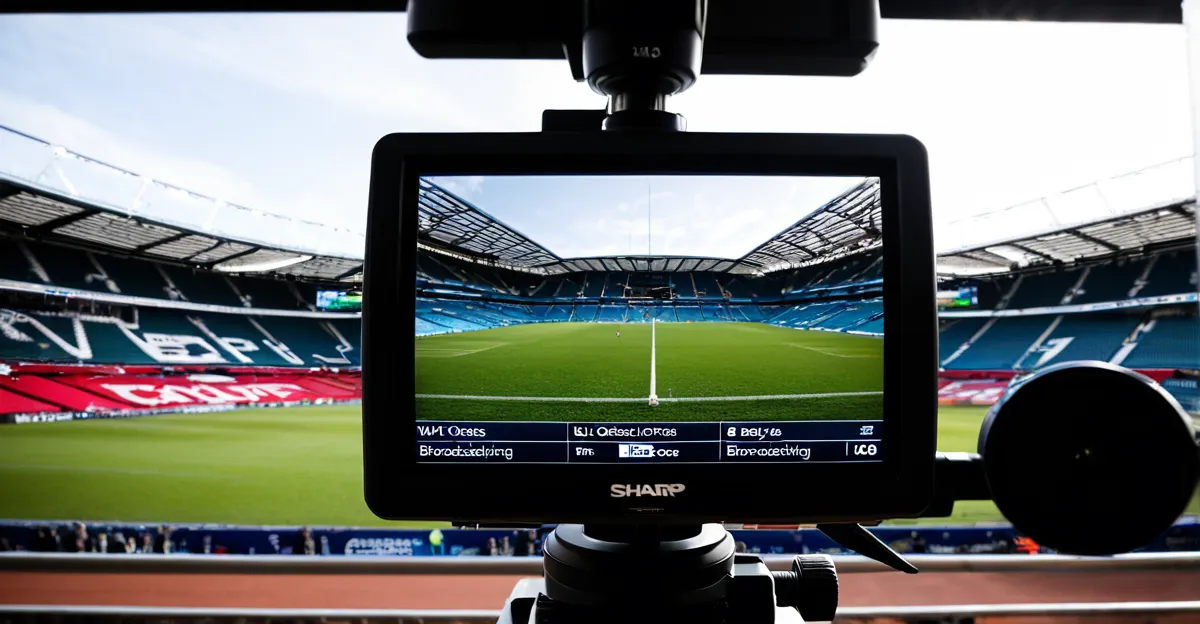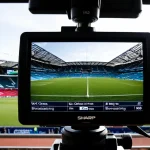Key Challenges in UK Sports Broadcasting
The current landscape of UK sports broadcasting challenges is shaped by several critical obstacles. At the forefront are technological advancements, regulatory complexities, and shifting market dynamics. Together, these sports media obstacles influence how content is delivered and consumed across the country.
One principal issue involves adapting to rapid changes in broadcasting technology. Broadcasters must continuously upgrade infrastructure to support innovations like 4K resolution and interactive features, yet the costs and technical demands create significant hurdles. Additionally, ensuring reliable access in rural or underserved areas remains problematic, affecting audience reach and satisfaction.
Also read : How Are Grassroots Programs Impacting UK Sports Development?
Regulation also plays a pivotal role. The UK’s evolving legal frameworks, including Ofcom oversight, impose stringent rules that affect content rights and broadcast operations. Securing broadcasting rights for major sports events comes with escalating costs and contractual complexity, further complicating matters for rights holders and providers alike.
Market forces add another layer of difficulty. Fragmented audiences, driven by younger generations favoring multi-platform and on-demand consumption, challenge broadcasters to maintain consistent viewership. This fragmentation, combined with increasing competition from digital services, complicates revenue generation and long-term sustainability.
Also read : What are the future trends in UK sports technology?
Understanding these intertwined challenges is essential for stakeholders aiming to navigate the intricate broadcasting issues UK sports media currently face.
Regulatory Pressures and Broadcasting Rights
The sports broadcasting regulation UK landscape has become increasingly complex, with Ofcom regulations and evolving EU policies closely shaping operational frameworks. These regulations are crucial for maintaining fair competition and protecting consumer interests, but they also introduce significant compliance demands that broadcasters must navigate carefully.
One of the most pressing broadcasting issues UK faces concerns the rising costs and complexities related to broadcasting rights costs. Securing rights for major sporting events now involves lengthy negotiations, high fees, and exclusivity clauses that can exclude smaller broadcasters or digital platforms. This cost pressure directly impacts both sports media obstacles and consumer access, as some rights holders pass on expenses by raising subscription fees, potentially limiting audience reach.
Furthermore, these regulatory pressures affect broadcasters’ flexibility in content scheduling and sharing, constraining innovation and diversity in sports coverage. Rights holders must balance lucrative deals against wider viewer engagement, creating tension between commercial viability and public accessibility. Overall, the combined effect of stringent regulations and escalating rights costs significantly shapes the operational and strategic decisions within UK sports broadcasting.
Competition from Streaming Services
The rise of sports streaming services UK profoundly reshapes the broadcasting landscape. Traditional broadcasters now face intense competition from digital platforms offering flexible, on-demand access. The central broadcast vs streaming tension lies in consumer preference shifts; younger audiences increasingly favour streaming, which allows personalized viewing anytime, anywhere.
This digital disruption sports media creates challenges, including shrinking linear TV viewership and pressure on subscription models. Streaming services often bundle multiple sports or exclusive content, attracting subscribers and fragmenting the market further. Broadcasters must innovate to remain relevant, integrating streaming features or developing hybrid models that combine broadcast reliability with digital interactivity.
Financially, this competition affects advertising and rights negotiations, as fragmented audiences dilute traditional revenue streams. Sports rights holders must now balance deals for both broadcast and streaming platforms to maximize reach without overspending. Additionally, technological requirements for reliable streaming—such as seamless high-definition video and low latency—demand substantial investment.
Overall, sports streaming services UK are not merely a supplementary option but a transformative force reshaping how sports content is delivered and consumed. Broadcasters must adapt swiftly to evolving viewer habits or risk losing market share amidst this growing digital disruption sports media environment.
Shifting Viewer Habits and Audience Fragmentation
Changing sports audience trends UK profoundly affect broadcasting strategies. Younger viewers increasingly prefer multi-platform access, combining mobile, desktop, and connected TV viewing. This shift creates significant broadcasting issues UK, as traditional appointment-to-watch models give way to on-demand consumption and short-form highlights.
Audience fragmentation emerges from these diverse viewing habits. Instead of a unified broadcast pool, viewers are scattered across platforms, apps, and social media. This challenges broadcasters to identify and engage fragmented audiences without sacrificing content quality or reach. Consequently, sports media obstacles include tailoring content delivery to various devices and formats while maintaining consistent viewer loyalty.
Moreover, these fragmented habits complicate audience measurement and advertising targeting. Broadcasters must develop sophisticated analytics to understand and monetize fragmented viewer bases effectively. They also face pressure to innovate with interactive and personalized offerings to retain interest.
This transformation in viewer habits sports demands adaptability. To succeed, UK sports broadcasters must rethink scheduling, rights management, and digital integration, ensuring content resonates across fragmented audiences without diluting brand identity or revenue potential.
Technological Innovation and Infrastructure
Adopting advanced sports broadcast technology UK is essential but challenging in today’s competitive market. Broadcasters face significant pressure to upgrade systems for 4K broadcasting and integrate emerging formats like virtual reality and interactive features. These technologies enrich viewer experience but require costly investment in both hardware and software.
A core issue lies in developing sufficient sports streaming infrastructure that supports seamless, high-definition delivery with minimal latency. Without reliable infrastructure, streaming quality suffers, damaging user satisfaction and limiting audience growth. This is particularly critical as sports streaming services UK expand rapidly, demanding robust networks to handle heavy traffic and diverse content types.
Rural and underserved areas experience additional hurdles, often lacking the bandwidth needed to access enhanced broadcasts. This digital divide creates inequity in sports access, intensifying existing broadcasting issues UK. Broadcasters must balance innovation with accessibility to avoid fragmenting viewership further.
Ultimately, evolving technology raises both opportunity and complexity. Investing wisely in infrastructure upgrades is vital for broadcasters to meet modern viewer expectations, deliver high-quality content, and remain competitive in a dynamic sports media landscape. Failure to do so risks falling behind as digital disruption reshapes audience demands.
Financial Sustainability and Future Outlook
As sports broadcasting revenue UK faces decline, broadcasters confront growing financial challenges sports media with increasing operational costs squeezing profit margins. Advertising income, traditionally a primary revenue source, is shrinking due to fragmented audiences and digital substitution. This erosion pressures rights holders and broadcasters to rethink their business models.
Exclusivity deals, while lucrative, pose a double-edged sword. They often drive up broadcasting rights costs, which can price out smaller outlets and restrict viewer access. This narrowing of available platforms risks alienating fans who seek affordable and broad access to sports content. Sustainability demands balancing lucrative exclusive contracts with wider distribution.
Experts suggest that diversifying revenue streams is essential to a viable broadcasting future UK. This includes leveraging data analytics for targeted advertising, introducing flexible subscription models, and exploring partnerships with digital platforms to maximize reach. Cost control via efficient technology use is also vital.
Ultimately, the challenge is to harmonize commercial viability with audience inclusivity. Addressing these financial challenges sports media with innovative, adaptive strategies will determine the long-term health of UK sports broadcasting.





